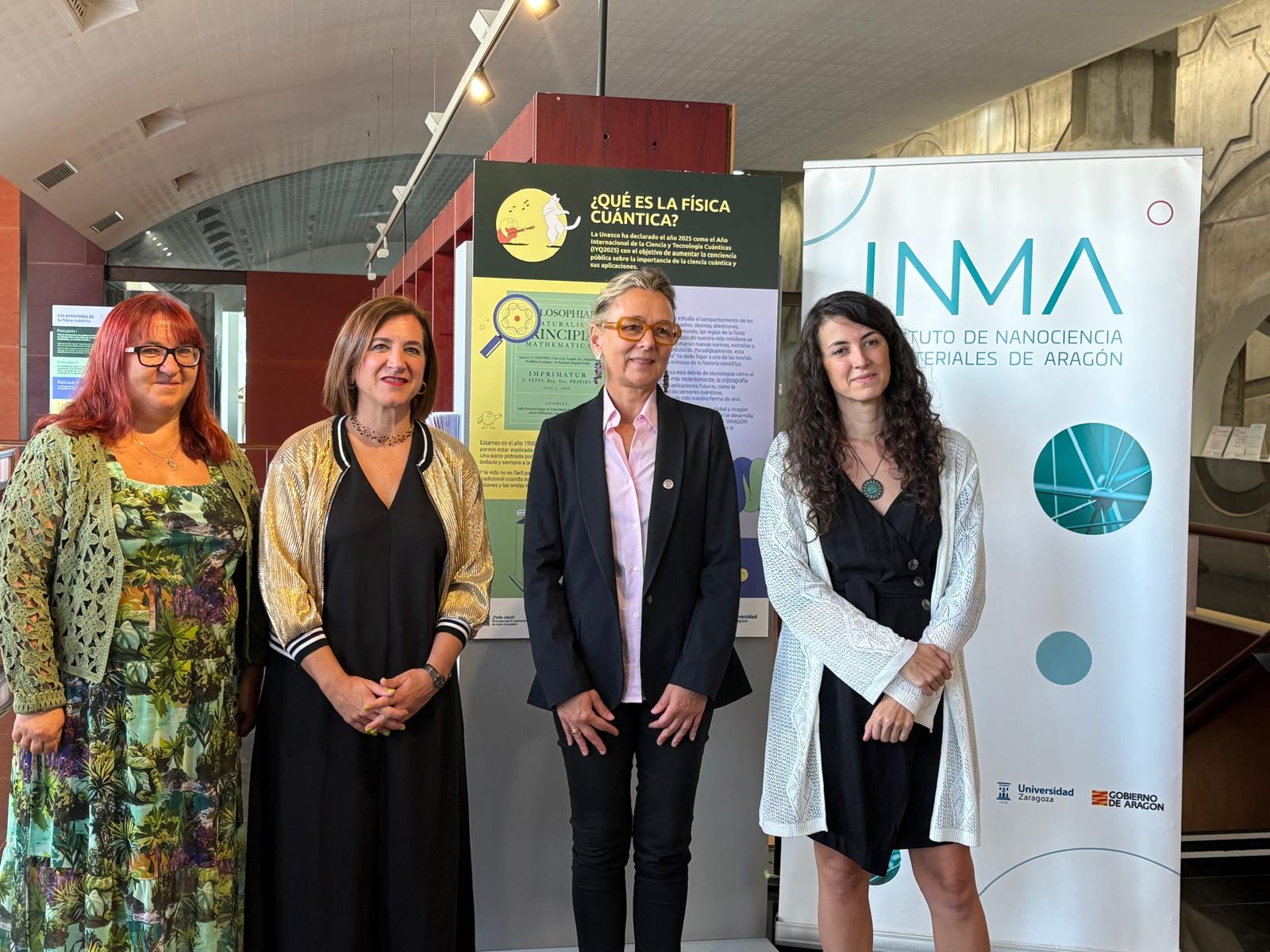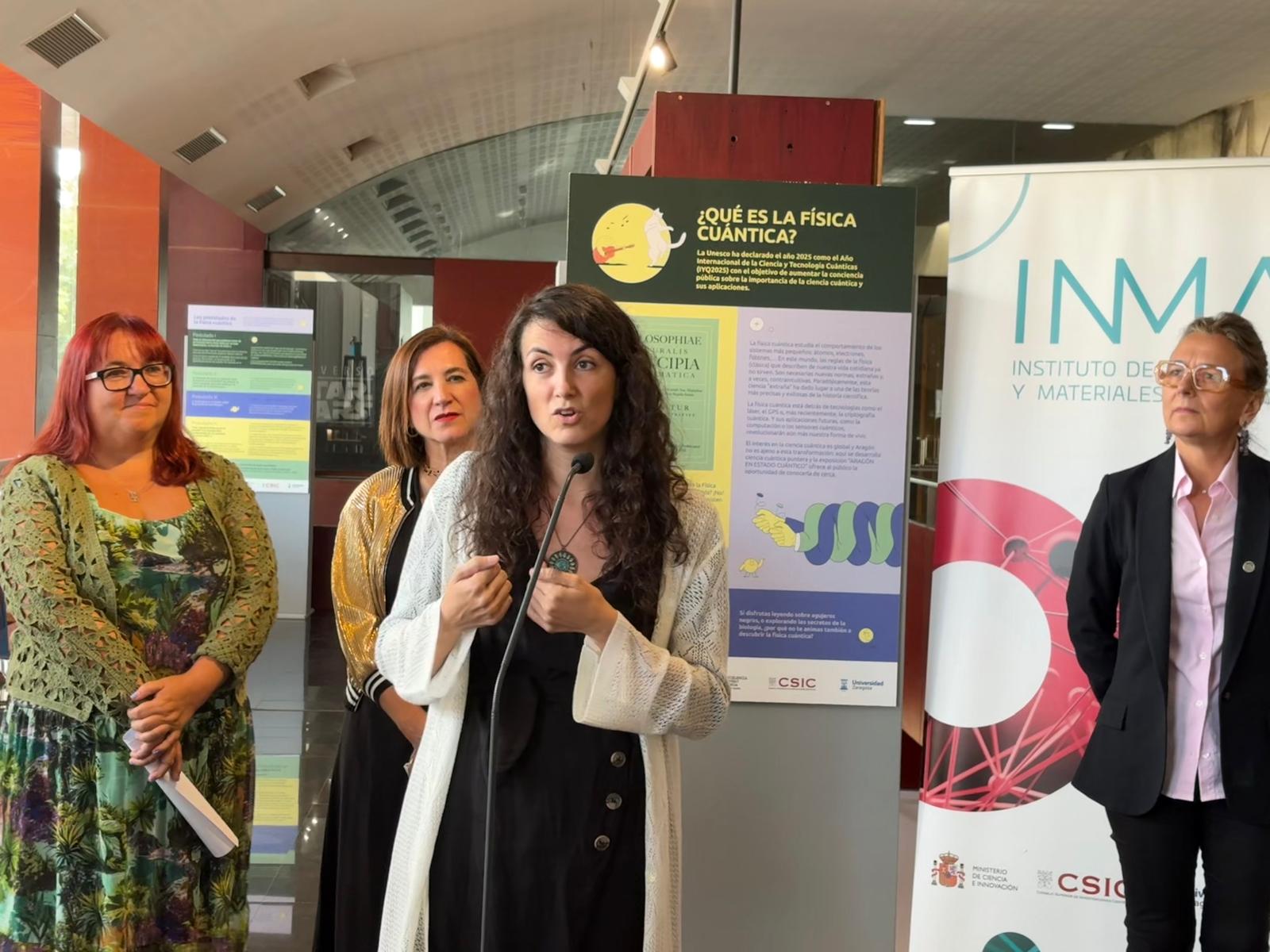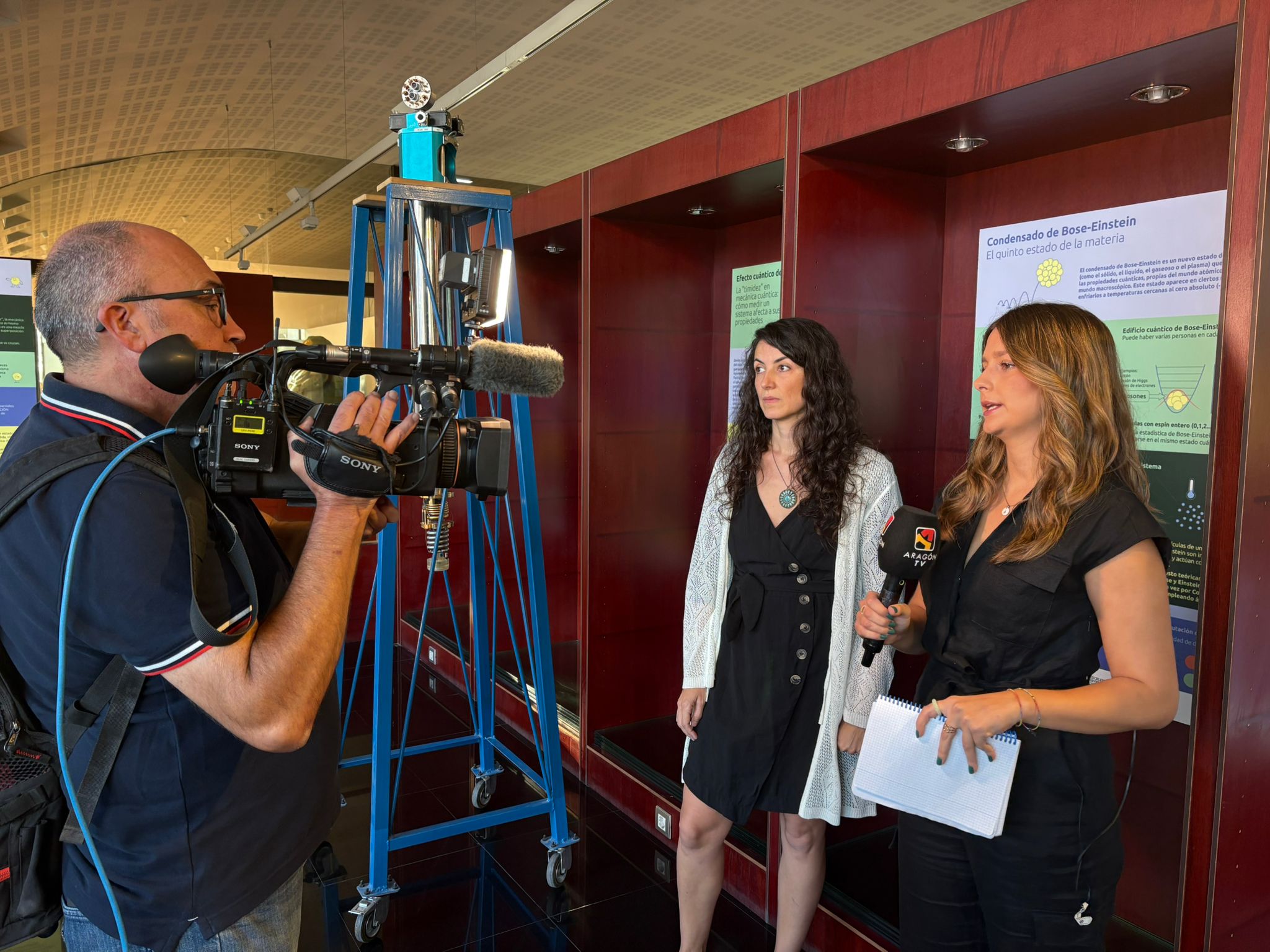Aragonese science asserts its role in the second quantum revolution with an autumn of activities open to the public
The Aragon Nanoscience and Materials Institute (INMA), a joint institute of the Spanish National Research Council (CSIC) and the University of Zaragoza, today launched a ‘Quantum Autumn’ with exhibitions, talks and film series open to the public
The Vice-Rector for Scientific Policy at the University of Zaragoza and the institutional representative of the CSIC in Aragon highlighted the important contribution of Aragonese researchers to this promising branch of knowledge, advancing new materials and quantum sensors
Zaragoza, 10 September. This morning, Aragon entered a “quantum state” to bring quantum science and technologies closer to society and showcase the lines of research being led by the autonomous community. The Institute of Nanoscience and Materials of Aragon (INMA), a joint institute of the CSIC and the University of Zaragoza, has presented an ambitious programme of activities for this autumn, including exhibitions, cultural events and talks by renowned experts in the field. It thus joins in the global celebrations after UNESCO declared 2025 the International Year of Quantum Physics and Technologies.
Aragonese researchers have been working for decades on what has led to what is known as the “second quantum revolution”. Back in the 1970s, Aragonese science pioneered the use of liquid helium cooling techniques in Spain. The two sciences are inextricably linked, and this early commitment sowed the seeds for a unique scientific community here with expertise in quantum technologies.
The official opening of this “Quantum Autumn” in Aragon took place this morning at the Centro de Historias, which is the first stop on an exhibition tour of the three provinces that will explain the key aspects of the second quantum revolution and its origins. The official opening is at 6 p.m., after which Luis Martín Moreno, CSIC researcher at INMA and deputy director of the institute, will give the first quantum talk in the series.
During the presentation, and after the welcome by the Councillor for Culture, Education and Tourism of the Zaragoza City Council, Sara Fernández, the Vice-Rector for Scientific Policy at the University of Zaragoza, Pilar Pina, highlighted that “the programme being presented today is further proof that Aragon is a world-class science hub. This “Quantum Autumn” is no coincidence: it is the result of a firm commitment to excellence in research in our community.”
Pina recalled that INMA is the first centre in Aragon to be awarded the prestigious Severo Ochoa seal of approval, and is an example of a centre where top-level science is carried out. “Aragonese society needs to see first-hand the talent it possesses and the cutting-edge research being carried out in its institutes. At the University of Zaragoza, we want Aragonese society not only to witness this change, but to be part of it from the beginning. These activities are a window onto excellence,” said the vice-chancellor.
For her part, the CSIC Institutional Delegate in Aragon, María Jesús Lázaro, stressed that ‘the “Year of Quantum” is an invitation to look to the future and bring this science closer to the public.’ Lázaro explained that the Spanish National Research Council (CSIC) is a leader in Quantum Technologies and created the CSIC’s Interdisciplinary Thematic Platform (PTI) in Quantum Technologies (QTEP) a few years ago, of which INMA is a member. The CSIC recently approved a Strategy for Quantum Sciences and Technologies for the years 2025-2030, which seeks to strengthen this area throughout the institution. ‘The activities being launched today will enable society to understand the potential of quantum technology and also its challenges,’ he emphasised.
New avenues in new materials and quantum sensors
The coordinator of this cycle is María José Martínez Pérez, a scientist at the CSIC’s INMA, who has emphasised that the scientists at this institute have their own forward-looking lines of research in the field of quantum physics. “Most of the scientific community worldwide and nationally has focused on superconducting technologies, which are reaching their limits. In Aragon, we believe that to obtain different results, it is better to try different things, and we are working on quantum technology based on other materials, molecular and two-dimensional magnets, which may one day be the solution,” she explained. In this regard, he explained that INMA scientists are developing quantum sensors that will soon travel into space on ESA missions to help us understand what the universe is made of, as well as sensors that will enable the early detection of diseases such as cancer.
Regarding the spirit of the exhibition, he insisted that the primary objective is to raise awareness among Aragonese society of the quality of the research being carried out in Aragon through the exhibition that opens today and will tour Huesca, Zaragoza and Teruel, but also through talks and a film series. ‘We especially want to reach young people, secondary school and sixth form students who will be our researchers in the future,’ he explained.
Programme until November
The events begin today with the opening of an exhibition at the Centro de Historias in Zaragoza (until 28 September), which will subsequently travel around the three provinces. The exhibition will open at 6 p.m. and will be followed by the first “quantum talk” in the series, in which researcher Luis Martín Moreno will speak on: “Quantum Physics: Why is nature so strange?”.
During September, October and November, the exhibition will be open to the public at the Villahermosa Palace in Huesca (from 3 to 28 October), at the CEFCA in Teruel (from 30 October to 14 November) and, in parallel, at the CSIC delegation in Aragon. In addition, thanks to the collaboration of the Royal Academy of Exact, Physical, Chemical and Natural Sciences of Zaragoza, visitors will also be able to see the exhibition by Miguel Catalán, an Aragonese pioneer in this field, in the auditorium of the University of Zaragoza, together with lectures scheduled for 11 November.
Furthermore, visitors will be able to enjoy a series of “quantum cinema” at the Zaragoza Film Library, and there will be round tables and informative talks by leading researchers, many of them linked to INMA itself, a Severo Ochoa centre of excellence.
What is quantum physics used for?
Quantum physics is one of the most successful scientific theories of all time. Although its language (made up of probabilities, superpositions and entangled particles) can be difficult to understand, it is already part of our daily lives through such common tools as the GPS we use to get around the city; the chips and transistors in our mobile phones and computers; and MRI scans in hospitals. We are now experiencing the so-called second quantum revolution, which will bring even more groundbreaking applications such as ultra-precise sensors and quantum computing.
The ‘Aragón en Estado Cuántico’ (Aragon in a Quantum State) project is part of the celebration of the centenary of the foundational works of quantum physics, signed by figures such as Albert Einstein and Werner Heisenberg, which marked the beginning of a true revolution in our understanding of the world.
It is hoped that this programme will not only serve to raise awareness of the importance of quantum physics, but also to encourage scientific vocations, build bridges between research and society, and highlight the role of Aragon as a region with talent and the capacity to compete at the frontier of knowledge.
INMA, Severo Ochoa Centre of Excellence
In 2024, the Aragon Nanoscience and Materials Institute (INMA) became the first research centre in the region to receive Severo Ochoa Centre of Excellence accreditation. This recognition entails funding of €4,500,000 and the awarding of five pre-doctoral contracts for the period 2024–2028, in addition to the ten that were awarded in the previous call.
INMA has an integrative approach that translates research into nanomaterials into solutions for societal challenges. The institute currently has around 300 members and more than 40 European projects underway. It publishes an average of 300 papers per year and has obtained €7 million in competitive public funding.
In addition to having created numerous technology-based companies, four of which are active, it has 15 valid patents, five of which are licensed. INMA works closely with industry. All this provides around one million euros in annual revenue.
Para más información y entrevistas: 699 498089


10-09-2025









